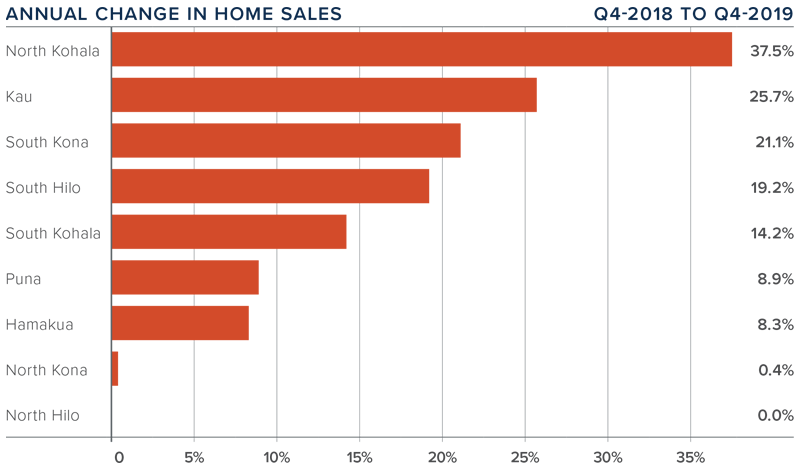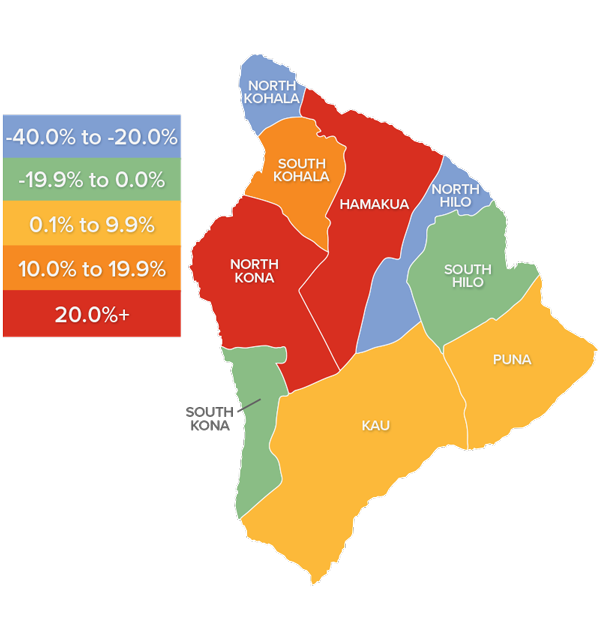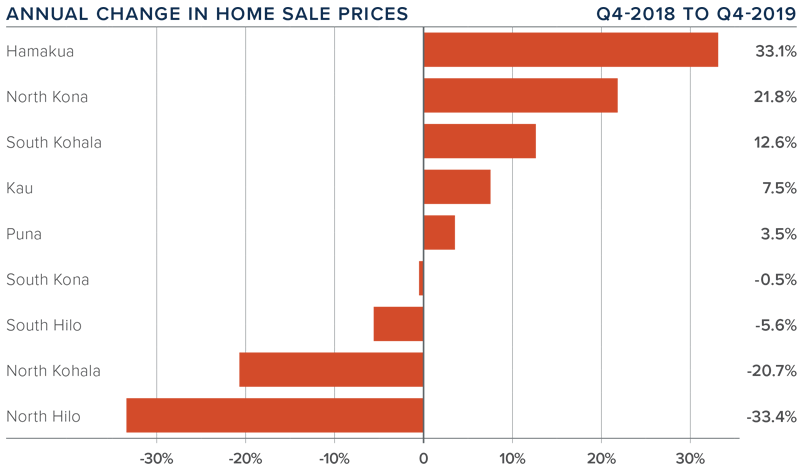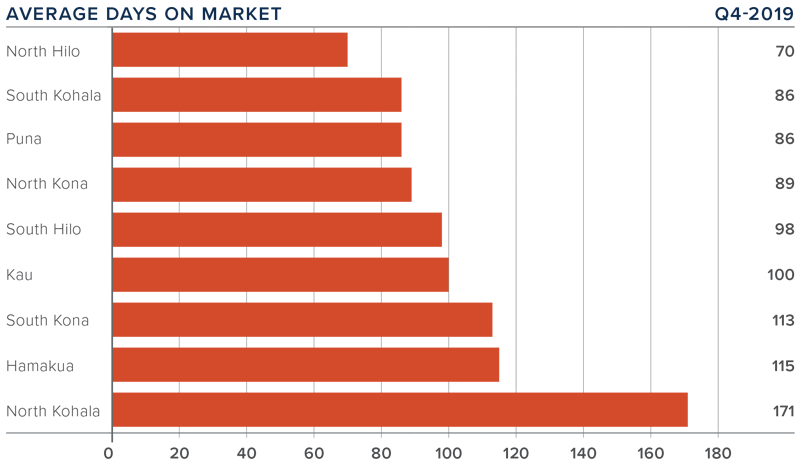The following analysis of the Big Island real estate market is provided by Windermere Real Estate Chief Economist Matthew Gardner. We hope that this information may assist you with making better-informed real estate decisions. For further information about the housing market in your area, please don’t hesitate to contact your Windermere agent.
ECONOMIC OVERVIEW
Hawaii saw employment grow at an annual rate of 0.5%, adding 3,100 jobs over the past 12 months. In November, the state’s unemployment rate was 2.6%, matching last year’s rate.
On the Big Island, total employment continues to contract; the region lost 2,260 jobs over the past year. Annualized employment growth has been negative for the past 14 months. That said, the Island’s unemployment rate was a respectable 3.5%, up from 3.4% a year ago.
HOME SALES
- In the final quarter of 2019, 824 homes traded hands, representing an increase of 10.2% compared to the fourth quarter of 2018, but 0.6% lower than in the third quarter of 2019.
- Sales were higher than, or matched, levels seen a year ago. There was significant growth in sales in the North Kohala market and sales rose by double-digits in four other markets.
- The growth in sales came as inventory levels fell 1.8% from a year ago. The average number of homes for sale in the quarter was down 2.3% from the third quarter of 2019.
- Pending home sales dropped 0.8% compared to the third quarter of this year, suggesting that closings in the first quarter may show few gains.

HOME PRICES
 The average home price in the region rose 10.2% year-over-year to $580,180. Prices dropped by amodest 0.8% between the third and fourth quarters of 2019.
The average home price in the region rose 10.2% year-over-year to $580,180. Prices dropped by amodest 0.8% between the third and fourth quarters of 2019.- Affordability remains an issue, but the current low interest rate environment has been motivating buyers and, as a result, prices continue to rise.
- Prices rose in five markets but dropped in four. Appreciation was strongest in the small Hamakua market area, where prices rose 33.1%. Home prices dropped the most in the smaller North Hilo market area.
- All things considered, and despite ongoing affordability issues in many Big Island market areas, I still expect home prices to rise into 2020.

DAYS ON MARKET
- The average time it took to sell a home on the Big Island dropped three days compared to the fourth quarter of 2018.
- The amount of time it took to sell a home dropped in five market areas and rose in four.
- In the fourth quarter, it took an average of 103 days to sell a home. Homes sold fastest in North Hilo and South Kohala and slowest in North Kohala.
- It took 11 fewer days to sell a home in the fourth quarter than in the third quarter of 2019.

CONCLUSIONS
 This speedometer reflects the state of the region’s real estate market using housing inventory, price gains, home sales, interest rates, and larger economic factors.
This speedometer reflects the state of the region’s real estate market using housing inventory, price gains, home sales, interest rates, and larger economic factors.
For the final quarter of 2019, I have moved the needle a little more in favor of home sellers. With inventory levels remaining low, prices rising, and interest rates very favorable, it appears that the market, which had been moving toward balance, has shifted again to favor sellers.
ABOUT MATTHEW GARDNER
 As Chief Economist for Windermere Real Estate, Matthew Gardner is responsible for analyzing and interpreting economic data and its impact on the real estate market on both a local and national level. Matthew has over 30 years of professional experience both in the U.S. and U.K.
As Chief Economist for Windermere Real Estate, Matthew Gardner is responsible for analyzing and interpreting economic data and its impact on the real estate market on both a local and national level. Matthew has over 30 years of professional experience both in the U.S. and U.K.
In addition to his day-to-day responsibilities, Matthew sits on the Washington State Governors Council of Economic Advisors; chairs the Board of Trustees at the Washington Center for Real Estate Research at the University of Washington; and is an Advisory Board Member at the Runstad Center for Real Estate Studies at the University of Washington where he also lectures in real estate economics.
 Facebook
Facebook
 Twitter
Twitter
 Pinterest
Pinterest
 Copy Link
Copy Link



